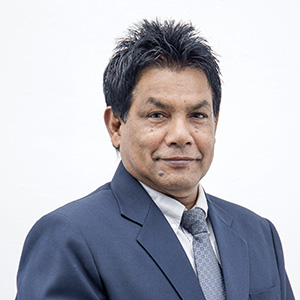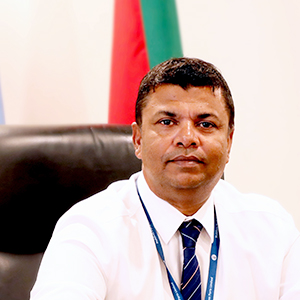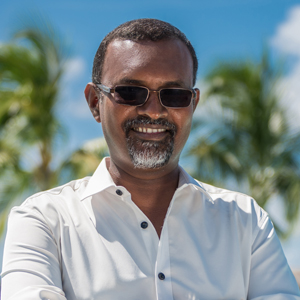What was once an isolated nation in the Indian Ocean has become an international hub of connectivity. Thanks to its strategic location, international airports and port, Maldives is now an important link on global travel and trade routes. And as the country’s economic growth continues, getting to and around Maldives is growing easier by the day
According to the Maldives Ministry of Tourism, 2018 was another record year for Maldivian tourism, with the country registering close to 1.5 million arrivals – up 6.8 percent from 2017. Air travel is the logical way for the vast majority of visitors to the Maldives to arrive. From the UAE, there are several direct flight options that take around four hours to reach the Maldivian capital Malé.
Once in Maldives, the most common way to move between islands is on airplanes. This both significantly reduces travel time between the country’s dispersed atolls and gets around potentially rough conditions at sea. In fact, Maldives is home to the world’s largest fleet of seaplanes.
To cater to the ever-increasing tourist demand, the country has been focused on getting the necessary airport infrastructure into place. At the moment, Maldives has three international airports and 10 altogether, yet both the number of domestic and international airports is expected to increase over the coming years. In April 2019, the first stages of development of the new Hoarafushi airport got underway, and the government recently fulfilled its promise to cut the price of domestic flights by 25-30 percent.

But perhaps the most significant project underway to expand Maldives’ tourism capacity is a $1 billion renovation of the country’s main international airport to more than double its arrival capacity from 3 million to 7.5 million passengers per year.
“This investment is not going to be done in phases – it’s happening simultaneously at all levels,” explains Moosa Solih, acting managing director of Maldives Airports Company Limited (MACL), which runs the Velana International Airport and is responsible for the expansion.
The major renovation is already well on its way. A new runway is expected to be operational by the end of this year and ongoing work on the new international passenger terminal building is expected to be complete within three years. Its new cargo facility will soon be able to accommodate 120,000 tonnes annually – more than three times the current capacity. Likewise, a new fuel farm and seaplane area are also in the works.
“Our focus has been to develop the entire airport because we believe that tourism must grow in order to serve the economy of our country,” adds Solih. “This project has its sights set well into the future.”
“When I was appointed last December, we had more than 5,000 empty containers in the port yard and more than 1,000 laden containers waiting to be cleared. The vessel turnaround time was more than nine days average,” recounts Shahid Ali, the new CEO of Maldives Ports Limited, responsible for the operations of the main Maldivian port in Malé.
Within just a few months, he managed to cut average vessel turnaround time to 4.7 days and reduce the number of empty containers to around 300. Yet, despite the progress, the current situation of Maldives’ ports remains something of a bottleneck.

“The space we currently have is limited and there is no possibility of expansion,” he explained. “When we originally built the port, it was designed to handle around 50,000 containers. Today, container volume surpasses that level by threefold.”
Due to Maldives’ strategic location between South Asia, Africa and the Middle East, increasing global trade, and a growing local economy, Ali expects cargo shipments to double in volume over the next two to three years.
That’s where the Thilafushi Port Project comes in, with the mission to become a globally competitive port and logistics zone, capable of handling the steady increase of trade for the next 40 to 50 years. Global companies and investors are invited to explore the project, which is still in its first phases of development.
Meanwhile, Ali has found temporary fixes using spaces in Hulhumalé and elsewhere, but the hope is for Thilafushi to become the country’s main industrial port as soon as possible.
Last February, Manta Air, Maldives’ new domestic carrier, began operations with a promise to shake up the local airline industry. Created by a group of hoteliers, Manta Air’s founders saw an opportunity to fill an important gap in air travel.
“Over the decades, we have had problems with the transfer of passengers to hotels,” explains Mohamed Khaleel, the new airline’s CEO. “We worked hard with the existing airline system operators to improve the services and implement more of a customer service approach to the airline business. This didn’t get where we wanted, so we decided it was time to start our own airline to fix the issues ourselves.”

Armed with the knowledge of what Maldivian resorts and tourists are demanding, Manta Air took off. Differing from other seaplane operations, Manta Air publishes the international transfer schedules in advance and works closely with the hotels to ensure visitors arrive in the smoothest way possible. Manta Air is now looking to forge partnerships with more hotels and resorts across the country.
“We’re viewing the business from both the airline and the hotelier lens, and that is unique,” says Khaleel. “The certainty and reliability of our airline is the key to why we are the best partner. Our objective is to raise the bar, and I think we’re doing that.”